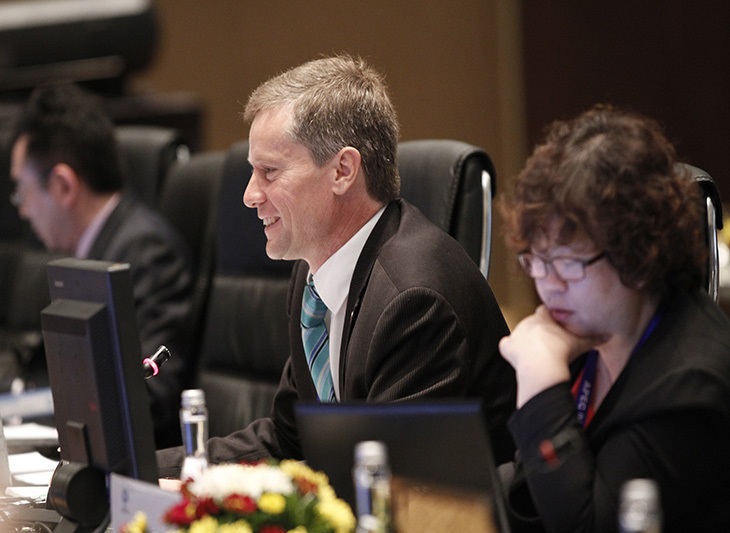Nurture high value added suppliers to capitalize on electronics supply chain, says analysis

Nurturing the development of high value-added suppliers is the most effective way for APEC economies to benefit from the global electronics supply chain, recommends a recent APEC Policy Support Unit report presented to the APEC Committee on Trade and Investment on Tuesday in Medan.
The report focuses on the higher value-added supplier portion of the supply chain, known as intermediate electronic goods, as these suppliers capture the largest share of value-added. Case studies were conducted on the supply chains of smartphones, laptop PCs and LCD flat panel televisions.
For example, the global electronics supply chain of the Apple iPhone begins with research and development, and design in the United States, high value components from suppliers in Japan and Korea, followed by final assembly in China.
“The majority of intra-regional trade between APEC Asian economies is made up of supplier or intermediate electronic goods,” explained John Larkin, Chair of the APEC Committee on Trade and Investment. “This intra-regional trade in the electronics supply chain is one of the reasons the Asian region continues to grow despite slowdowns in the US and Europe.”
The report suggests that component suppliers are based in a small group of economies—Korea, the United States, Japan, Chinese Taipei. Developing economies, particularly Malaysia, Thailand, Mexico, and Viet Nam, then compete for a share of total supply chain value represented by assembly of parts and final products. China, historically a final assembly point, is now increasingly participating as a higher value-added supplier of component parts, the report found.
“With the gap between the two sides narrowing, this provides the opportunity for other enterprising developing APEC economies to follow China’s lead,” said Dr. Akhmad Bayhaqi, Senior Analyst at the APEC Policy Support Unit which conducted the research.
“Ultimately, economies in the world compete for high value-adding jobs in globally dispersed supply chains and upgrading workforce skills stands above all as the most common policy priority,” explained Dr. Bayhaqi.
“Capturing higher value-added activity can help emerging economies avoid the middle income trap and slowing per capita growth,” added Dr. Bayhaqi.
To move up the supply value chain, the report recommends APEC economies nurture human capital through technical skills training and more flexible immigration policies. Developing greater research and development, and design capabilities will also help a region’s suppliers capture higher value-added activity.
Other forms of valuable government support include access to financing, education for suppliers on trade regulation variations in the region, wider regional free trade agreements, regional intellectual property rights protection and a combination of localized financial incentives and advanced infrastructure to nurture the electronics industry cluster.
APEC economies are also strongly advised to address key challenges that may reduce the competitiveness of certain suppliers or regions. Some of these challenges include shorter product life cycles, natural disasters and trade barriers.
“Global Supply Chain Operation in the APEC Region: Case Study of the Electrical and Electronics Industry,” by the APEC Policy Support Unit, is available for download at this link.
# # #
For more information or to arrange possible interview opportunities, please contact Jennifer Juo +65 9721 8660 at [email protected] or Michael Chapnick +65 9647 4847 at [email protected].
Additional details about APEC meetings, events, projects and publications can be found at www.apec.org. You can also follow APEC on Twitter and join us on Facebook.

